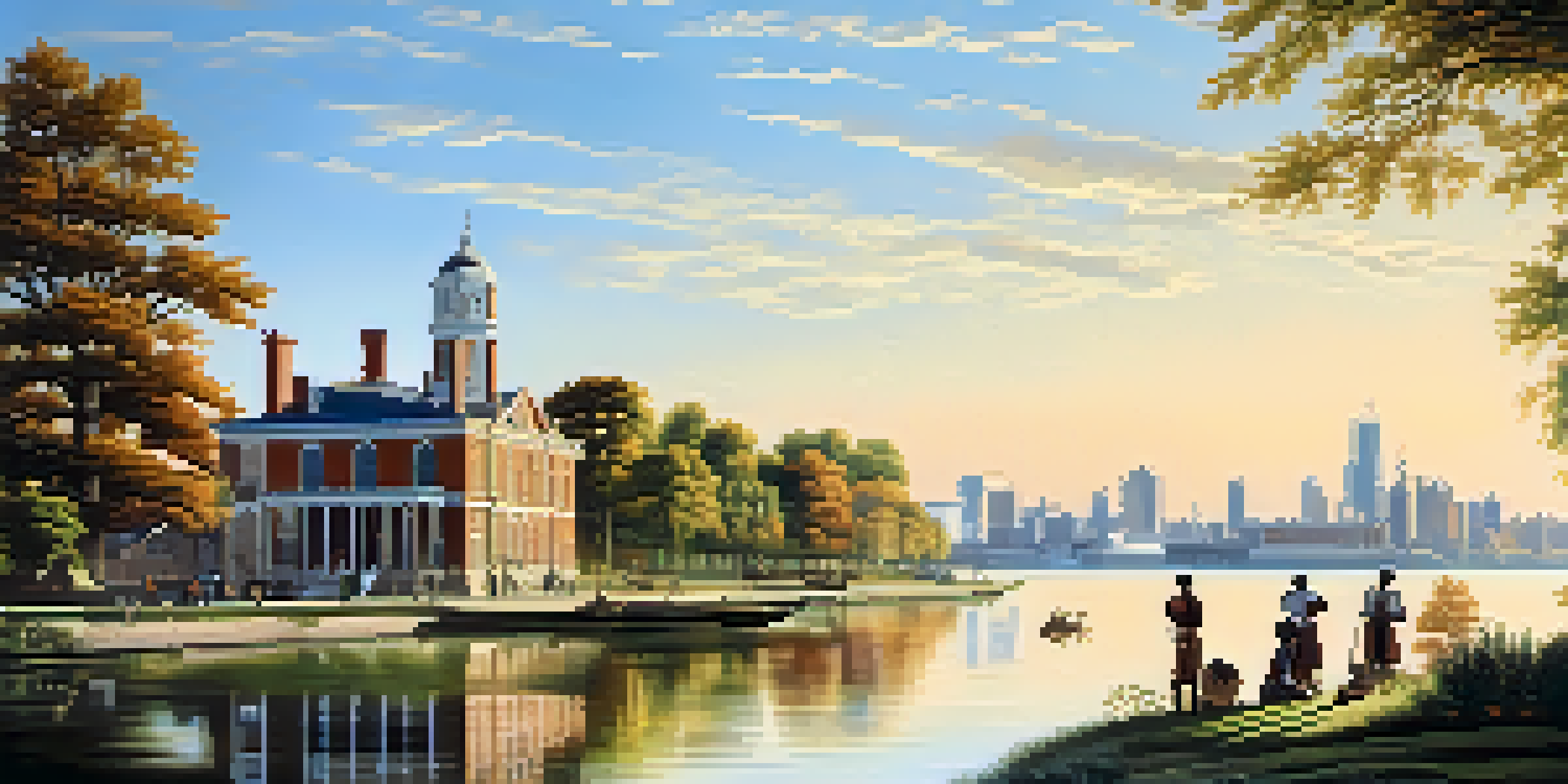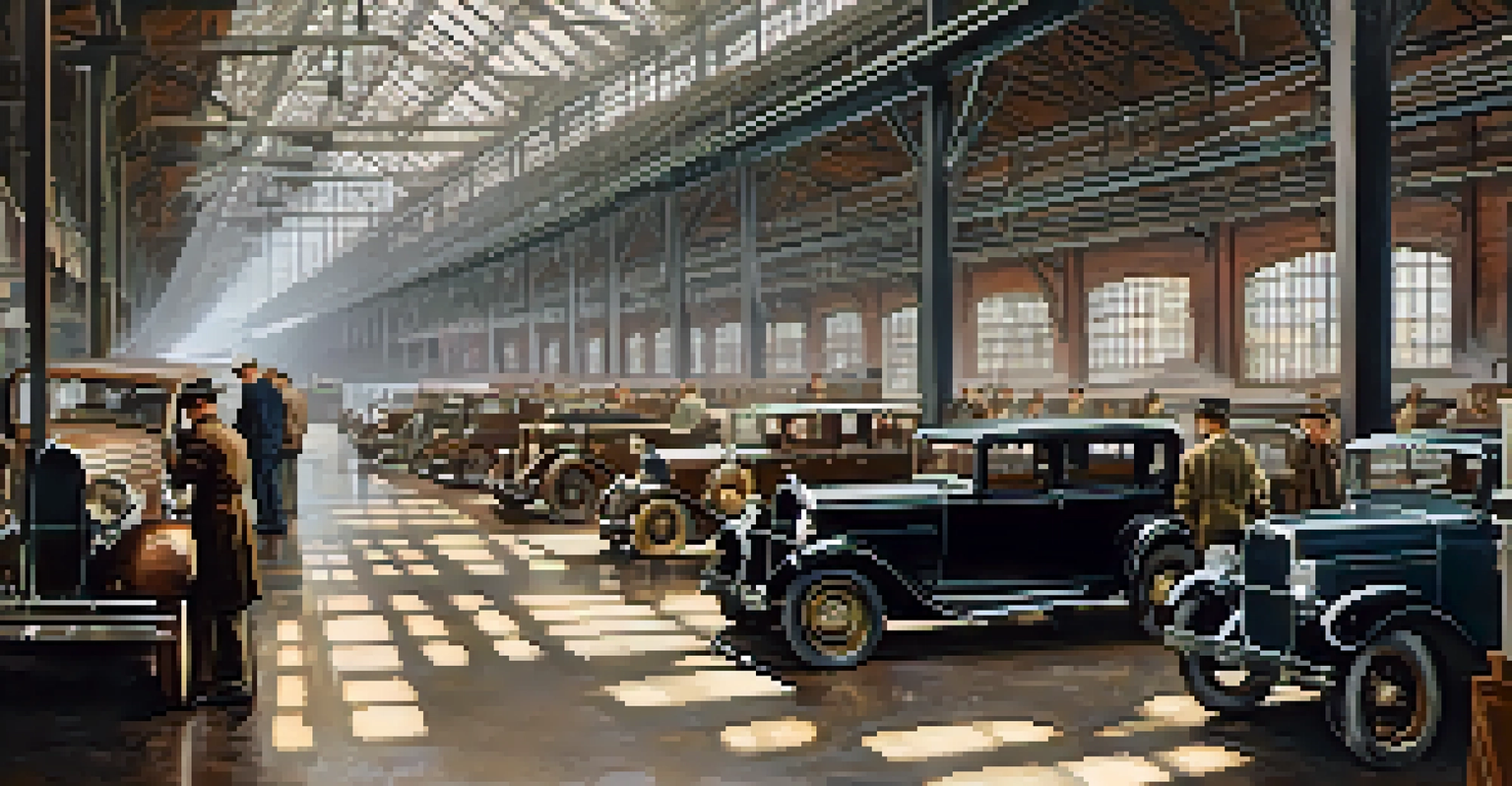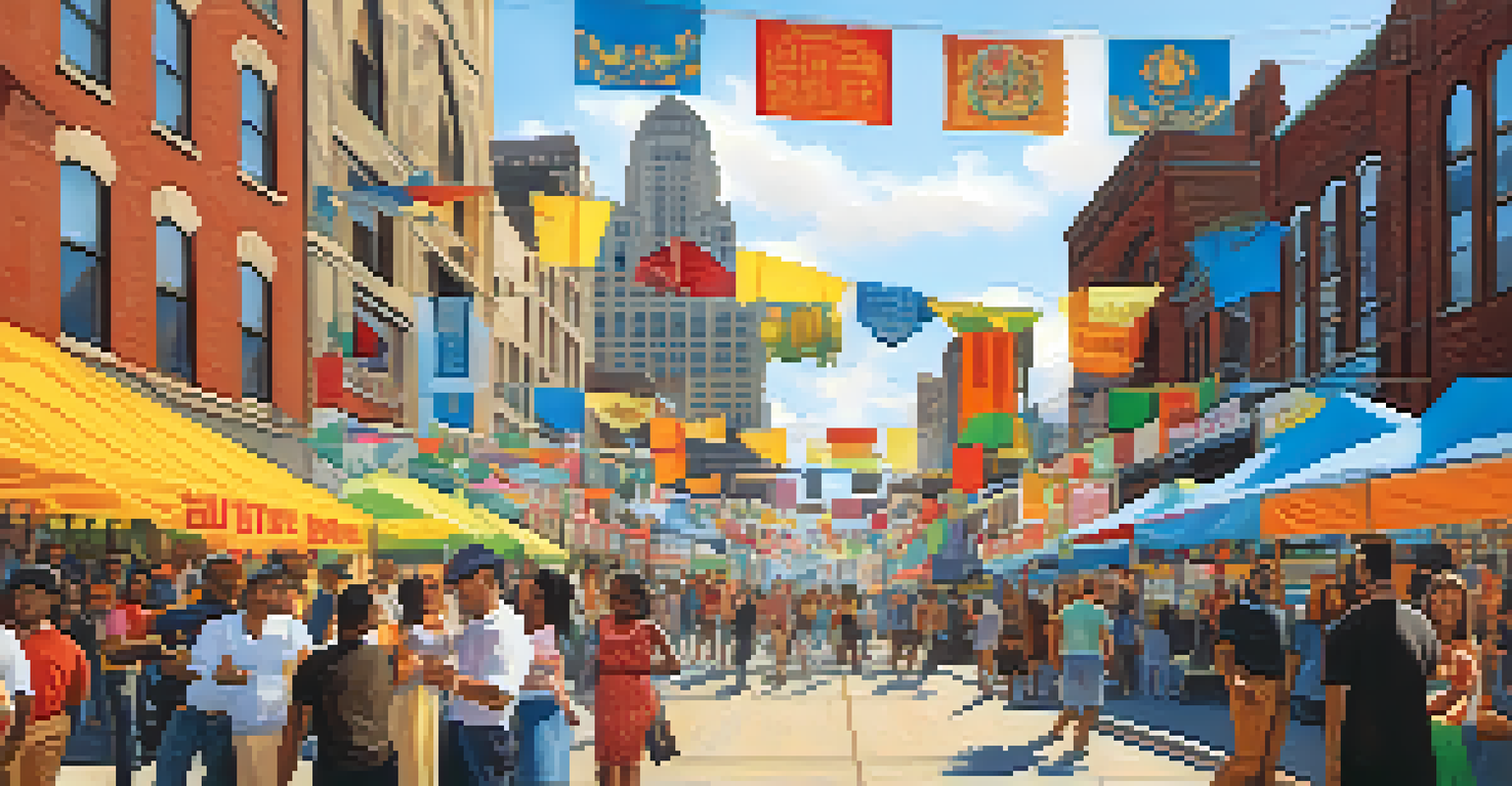Key Events in Detroit's History: A Timeline Overview

Founding of Detroit: The Start of a City
Detroit was founded on July 24, 1701, by French explorer Antoine Laumet de La Mothe, sieur de Cadillac. This marked the beginning of a settlement that would grow into one of America's major cities. The strategic location along the Detroit River made it a key trading post between Canada and the United States. Over the years, it evolved from a military outpost into a bustling hub of commerce and culture.
Detroit is a city that has a unique history, a spirit of resilience, and a capacity for rebirth.
The early years were challenging, with interactions between settlers and Native Americans shaping the community's growth. Fort Pontchartrain was established to protect the settlers, emphasizing the importance of security and trade. As the population increased, the French influence remained strong, evident in the city’s architecture and street names. This blend of cultures laid the foundation for Detroit's diverse identity.
By the mid-18th century, Detroit's population began to swell, attracting more settlers and traders. The city became a focal point for exploration and expansion in the Great Lakes region. This early growth set the stage for future developments, as Detroit's location continued to play a pivotal role in its history.
The Rise of the Automobile Industry in the 1900s
The early 20th century saw Detroit emerge as the epicenter of the automobile industry, primarily due to Henry Ford's innovations. In 1913, Ford introduced the assembly line, revolutionizing manufacturing and making cars affordable for the average American. This not only transformed the economy but also attracted a massive influx of workers seeking jobs, fueling the city's growth.

As more automobile companies established headquarters in Detroit, the city became synonymous with innovation and industry. By the 1920s, Detroit was producing more cars than any other city in the world, earning it the nickname 'Motor City.' This boom led to the construction of iconic structures and neighborhoods, symbolizing prosperity and the American Dream.
Detroit's Rich Historical Evolution
From its founding in 1701 to its role as the 'Motor City' in the 20th century, Detroit's history is marked by cultural diversity and significant industrial growth.
However, the rapid growth also brought challenges, including labor strikes and racial tensions. The industry’s expansion required a diverse workforce, leading to significant changes in the city's demographics. Despite these challenges, the automobile industry solidified Detroit's place in American history and culture.
The Great Depression: Struggles and Resilience
The Great Depression of the 1930s hit Detroit hard, as the automobile industry faced significant downturns. With unemployment rates soaring, many families struggled to make ends meet. This period tested the resilience of Detroit's citizens, who banded together to support one another through these challenging times.
The strength of Detroit is in its people, and the way they come together to overcome challenges.
As factories closed, the city saw a dramatic rise in poverty and homelessness. Community organizations and churches emerged to help those in need, providing food and shelter. Despite the hardships, the spirit of innovation persisted, with some businesses adapting to produce goods for the war effort, laying the groundwork for future recovery.
By the end of the decade, Detroit began to rebound, but the scars of the Depression remained. This experience fostered a sense of community and solidarity among residents, ultimately shaping the city's identity. The lessons learned during these tough times would influence Detroit's approach to future economic challenges.
Civil Rights Movement: A Fight for Equality
The Civil Rights Movement of the 1960s was a pivotal chapter in Detroit's history, as residents fought for racial equality and justice. The city was home to significant protests and movements, advocating for desegregation and fair housing. Leaders like Rosa Parks and Malcolm X emerged from Detroit, inspiring others and drawing national attention to the struggles faced by African Americans.
In 1967, the Detroit riots erupted, highlighting deep-seated racial tensions and economic disparities. The violence shook the city, leading to a national conversation about race relations and civil rights. In the aftermath, community leaders and organizations worked tirelessly to rebuild and heal, pushing for reforms to address systemic inequalities.
Resilience Through Economic Challenges
Despite facing economic decline and social struggles, Detroit's community has continually demonstrated resilience and innovation in rebuilding and revitalizing the city.
Despite the challenges, the Civil Rights Movement fostered a legacy of activism in Detroit. The fight for equality continued beyond the 1960s, shaping policies and programs aimed at improving the lives of marginalized communities. This period underscored the importance of unity and resilience in the face of adversity.
Economic Decline and Urban Challenges in the 1970s
The 1970s brought significant economic decline to Detroit, as the automobile industry faced fierce competition and globalization. Many factories closed or downsized, resulting in widespread job losses and contributing to the city’s population decline. This period marked a stark contrast to the prosperity of earlier decades, as residents grappled with the impacts of deindustrialization.
As the economy struggled, urban challenges such as crime, poverty, and inadequate public services became more pronounced. Neighborhoods that were once thriving faced neglect, leading to a decline in property values and a sense of abandonment. Community members rallied to address these issues, fostering grassroots movements aimed at revitalizing their neighborhoods.
Despite the difficulties, the 1970s also saw the emergence of new cultural movements and artistic expressions. Artists, musicians, and activists began to reclaim their spaces, infusing Detroit with creativity and hope. This combination of struggle and resilience laid the groundwork for future revitalization efforts in the city.
Revitalization Efforts: A New Era for Detroit
In the 2000s, a renewed focus on revitalization began to reshape Detroit's landscape. Initiatives aimed at improving infrastructure, attracting businesses, and enhancing quality of life gained momentum. The city saw investments in downtown development, arts, and culture, signaling a shift toward a brighter future.
Community engagement played a crucial role in these revitalization efforts. Residents and local organizations collaborated with city leaders to address pressing issues and create a sense of ownership in their neighborhoods. This grassroots approach fostered a sense of pride and involvement, breathing new life into once-neglected areas.
Cultural Renaissance and Future Growth
Detroit is currently undergoing a cultural renaissance, embracing its heritage while fostering new initiatives aimed at sustainability and inclusivity for future generations.
As a result, Detroit began to attract new residents and businesses, contributing to a dynamic and diverse economy. The city’s rich history and culture became focal points for tourism and investment, positioning Detroit as a city on the rise. The revitalization journey continues, with ongoing efforts to create a sustainable and inclusive urban environment.
Cultural Renaissance: Celebrating Detroit's Heritage
Detroit is experiencing a cultural renaissance, celebrating its rich heritage through art, music, and community events. The city is known for its contributions to music genres like Motown, rock, and techno, with events and festivals honoring these legacies. This vibrant cultural scene attracts visitors and fosters a sense of pride among residents.
Museums, galleries, and theaters play a vital role in showcasing Detroit's artistic spirit. Institutions like the Detroit Institute of Arts and the Motown Museum celebrate the city's creative history, drawing attention to its significance in American culture. These spaces provide opportunities for education and engagement, connecting people to their roots.

Moreover, the culinary scene has flourished, with local chefs and restaurants highlighting Detroit's diverse flavors. Food festivals and markets have become popular, showcasing the city’s culinary talent and fostering a sense of community. This cultural renaissance is not just about preservation; it’s about embracing the future while honoring the past.
Looking Ahead: The Future of Detroit
As Detroit continues to evolve, the future looks promising, driven by innovation and community engagement. Initiatives aimed at sustainability, technology, and entrepreneurship are gaining traction, positioning the city as a hub for progress. Young professionals and creative minds are flocking to Detroit, drawn by its potential and vibrant culture.
The city's commitment to inclusivity and diversity is also shaping its future. Efforts to empower marginalized communities and address systemic inequalities are at the forefront of local initiatives. By fostering collaboration and dialogue, Detroit aims to create an environment where everyone can thrive.
Looking ahead, Detroit's journey is one of resilience and reinvention. With a rich history as its foundation, the city is poised to become a beacon of hope and opportunity. As residents and leaders work together to build a brighter future, Detroit remains a testament to the power of community and the spirit of perseverance.